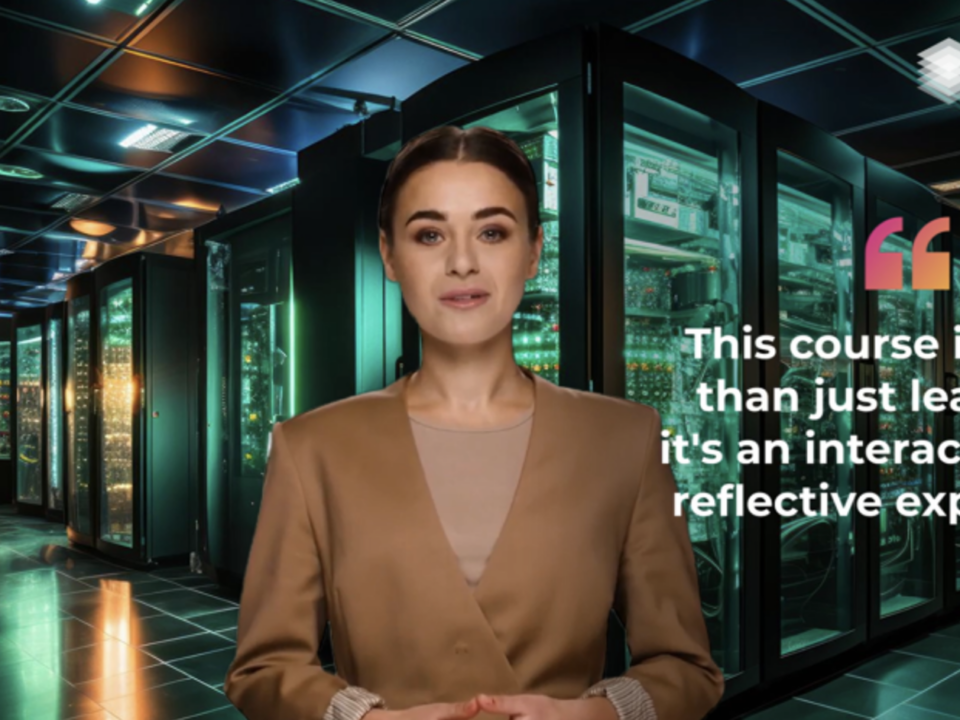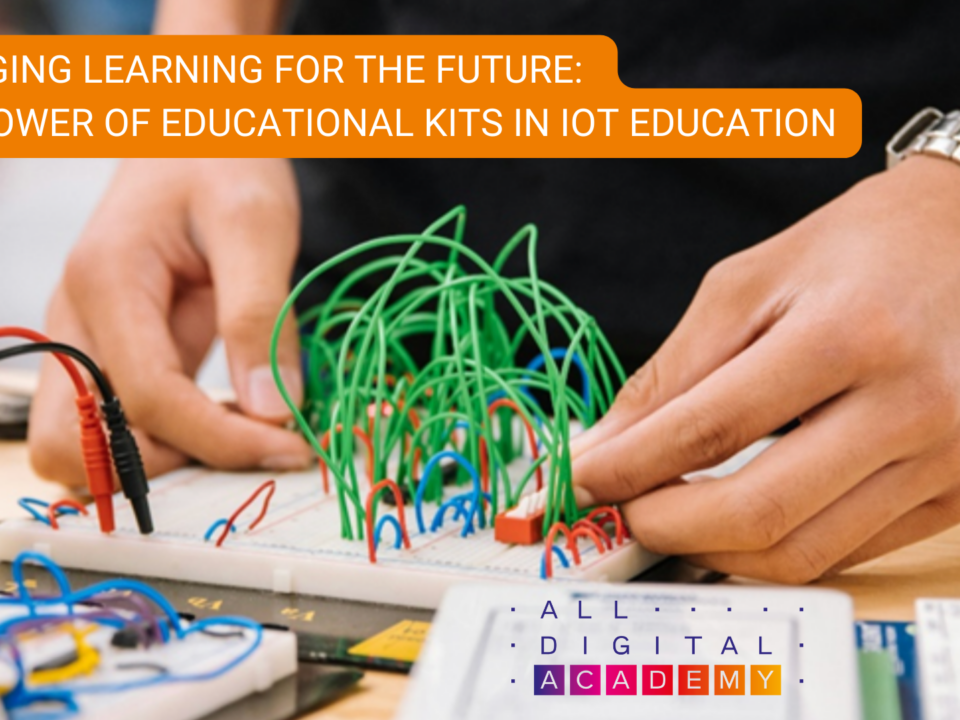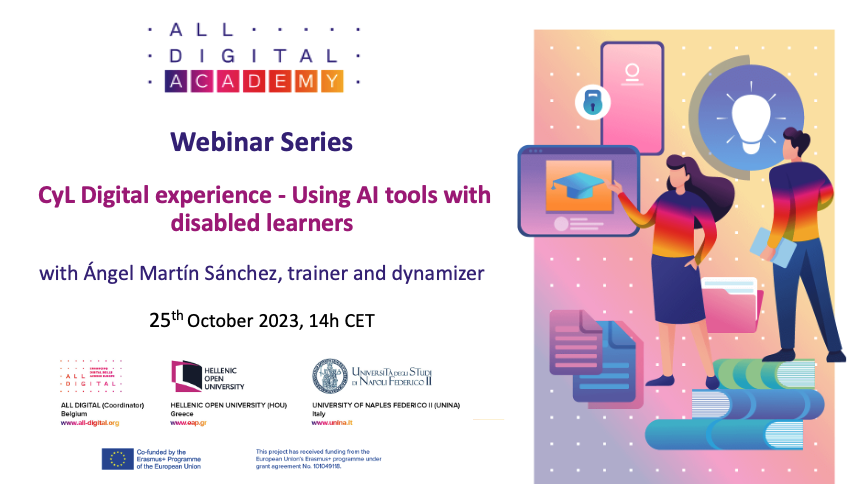
ADA WEBINAR: CyL Digital experience – Using AI tools with disabled learners (Rewatch)
October 25, 2023
3nd Piloting Cycle Open: ALL DIGITAL ACADEMY MOOCs for Adult Trainers on AI and IoT!
January 15, 2024Author: Gerasimos Vonitsanos
The Internet of Things
The vast network of networked everyday things, electronic devices, sensors, and products with network connections is called the Internet of Things, or IoT. Because of the technological revolution, common objects may now communicate and exchange information with humans and other people by becoming intelligent, data-generating entities. “Internet of Things” and “IoT” refer to extending network connectivity and computing capability to objects, devices, sensors, and items not ordinarily considered computers.
How may IoT affect employment in Europe?
According to a recent research by PwC in the Netherlands on behalf of the European Commission, the Internet of Things (IoT) is poised to transform the employment market in Europe altogether. The main results present both opportunities and difficulties.
First off, there will be a variety of effects on occupations. As everyday duties are replaced by automation and Internet of Things technology, certain occupations may go extinct. Many jobs will change significantly as technology becomes a necessary tool for experts in many fields, including nursing and plumbing. There will also be an increase in employment prospects due to the demand for data analysts and IoT professionals.
The study’s conclusion that IoT would have a substantial impact on every job is perhaps its most important finding. Since a startling 45% of labor tasks may be automated with current technology, workers must upskill and reskill. Hybrid work profiles, such as medical IT and robots, will replace traditional job profiles and need ongoing learning and adaptation. To effectively navigate this changing environment, we must retrain a growing number of workers whose education and talents need to be updated and educate individuals for new professions. How Europe reacts to these issues will determine its ability to utilize the Internet of Things (IoT) while safeguarding the lives of its citizens.
How can Europe maintain its lead?
In order to guarantee Europe’s sustained competitiveness, governments, corporations, and academic institutions need to adopt a radical new strategy regarding education, skill development, and employment. Accepting the digital era is essential.
Businesses are essential to this transition. By putting in place a thorough digital plan that considers the employees’ varied levels of technical ability, they may empower their workforce. This means ensuring that every employee, no matter how tech-savvy they are, learns to use technology and becomes involved in it.
What is STEM education?
STEM education refers to science, technology, engineering, and math. Creating a dynamic and student-centered learning environment requires a purposeful integration of these four disciplines and the practices that accompany them. Beyond conventional topic silos, STEM promotes an interdisciplinary approach that blends theoretical knowledge with practical application. Involving schools, families, and community partners in the educational process is another critical way it emphasizes meeting a student’s social, emotional, physical, and intellectual needs.
Real-world problem-solving and applying knowledge is at the forefront of STEM education, thanks to project-based learning. Rather than being confined to separate classes, STEM education unites differing concepts into one classroom, challenging students to shape solutions and articulate explanations supported by evidence.
The UMI-Sci-Ed project
The objective was to develop an integrated, collective, experiential, and open digital educational environment for teachers and students that will:
- allow students to understand, use, and develop UMI applications and consider their societal implications
- improve digital and UMI skills of teachers
- stimulate students to envision a future career in UMI technologies
- enable (in long-term) a societal reform towards responsible research and innovation
The UMI-Sci-Ed platform
Various tools are available on the web-based, open-access UMI-Sci-Ed platform to promote cooperative learning and information exchange. These resources include online chat features, wikis, blogs, forums, and an open repository. Combined, they allow Communities of Practice, or UMI Groups, to be developed around certain Educational Scenarios or UMI Scenarios. This set of features and technologies encourages the growth of specialized communities devoted to innovation and quality in education while enabling users to participate in cooperative activities.

Figure 1: The UMI-Sci-Ed platform
Educational Scenarios
An Educational Scenario (ES), as used in UMI-Sci-ED, is a template that describes the educational process in a training course. It is an essential tool that gives teachers guidance and understanding as they move through the educational process. These scenarios are specially designed to correspond with particular learning objectives, utilizing various instructional strategies that determine how activities proceed, which resources are best, and what role trainers play.
Several teams have carefully created a variety of instructional scenarios under the UMI-Sci-ED initiative, each with a unique approach to learning. Even if these ES can be used as templates, their true versatility lies in the educators’ capacity to modify them to meet the particular demands of the learning process and produce custom UMI Projects that meet their own goals and specifications.

Figure 2: Educational Scenarios
UMI projects
The implementation of educational scenarios, which may include all or some of the components of the corresponding educational scenario, is the scope of UMI projects. Every project is made to be easily integrated with the platform’s accessible features, facilitating productive communication and collaboration between participants and producers. By using instructional situations as models for project creation, members of the UMI-Sci-Ed community can better comprehend a variety of applications. These initiatives are thoughtfully arranged to support and enhance neighborhood events, encouraging cooperation and information exchange.
Going into practice – An example
The main objective of the example was to develop an Internet of Things application, especially for “smart” recycling systems. Using local indications, such as LEDs, to indicate when a bin is full, the system measures the amount of recyclable items in recycling bins and reports this information. It also employs mobile devices to offer real-time updates. The system can upload this level of data to the cloud, enabling local government organizations to efficiently plan and execute tasks, such as daily truck route optimization, to optimize public enjoyment while cutting costs. Additionally, this system can be improved by employing data analysis to make long-term choices like where to place additional recycling bins.
Required technological infrastructure
- Hardware: Computer, UDOO Neo Board, Recycle Bin Model, Electronic Components and Sensors
- Software: Internet Browser, Arduino IDE programming environment, VNC Viewer remote management software, Ubuntu Linux (UDOOUbuntu).

Figure 3: Required Hardware
The procedure of the example
The major outcomes of the example include a thorough comprehension and utilization of UMI technologies. By realizing the critical role of IoT, participants acquire the ability to create IoT applications, investigating the possibility of creating apps to improve daily living. Additionally, this experience enables them to see themselves in the future as professionals working in the IoT and associated sectors, advancing the subject of Ubiquitous and Mobile Computing (UMC).
The example of a UMI-Sci-Ed project comprises four key steps. Step 1 introduces the project, the recycling process, the transition from smart devices to IoT, and the UDOO kit. Step 2 involves practical experimentation, including a revision game, learning about electronic circuits, setting up UDOO, and programming Arduino. Step 3 emphasizes implementation, encompassing problem formulation, mathematical modeling, circuit design, programming, and data flow from sensors to the cloud and mobile devices. Finally, Step 4 focuses on reflection, involving debates on IoT and privacy, exploration of STEM careers, and the completion of discussions and questionnaires.
Step 1: Introduction
- UMI-Sci-Ed project and the Platform
- Introduction to recycling process
- From smart devices to IoT
- Introduction to UDOO kit
Step 2: Experimentation
- Revision game
- Theory and practice of simple electronic circuits
- UDOO setup and Arduino programming
- Distance measurements with UDOO and ultrasonic sensor
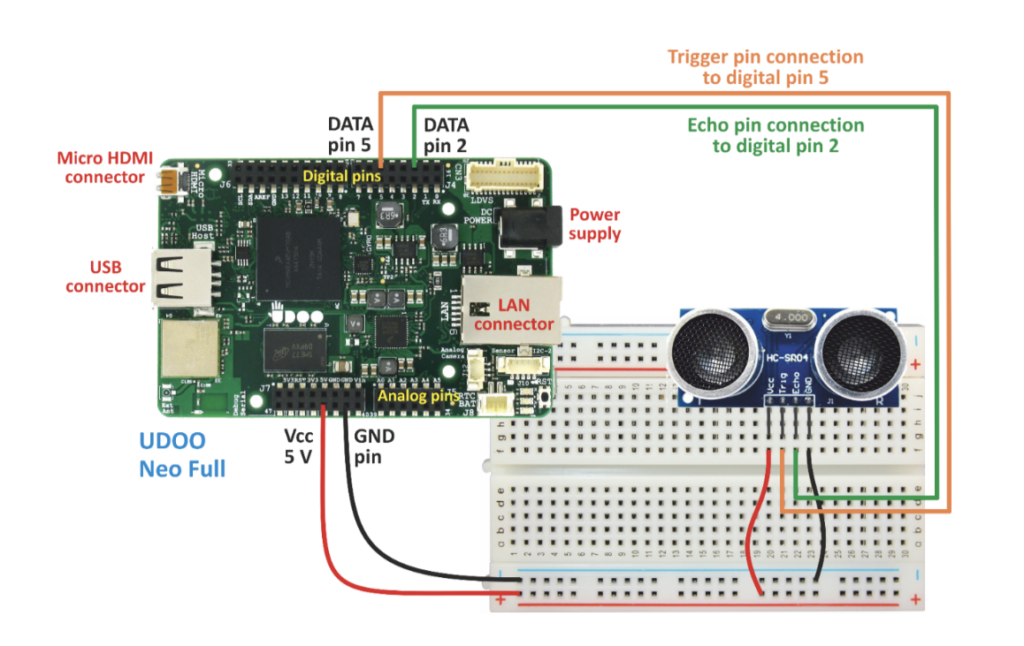
Figure 4: The UDOO Neo Board
Step 3: Implementation
- Revision game
- Problem formulation, modeling
- Math, circuit design, development and programming
- Sensor → UDOO → Cloud → Mobile
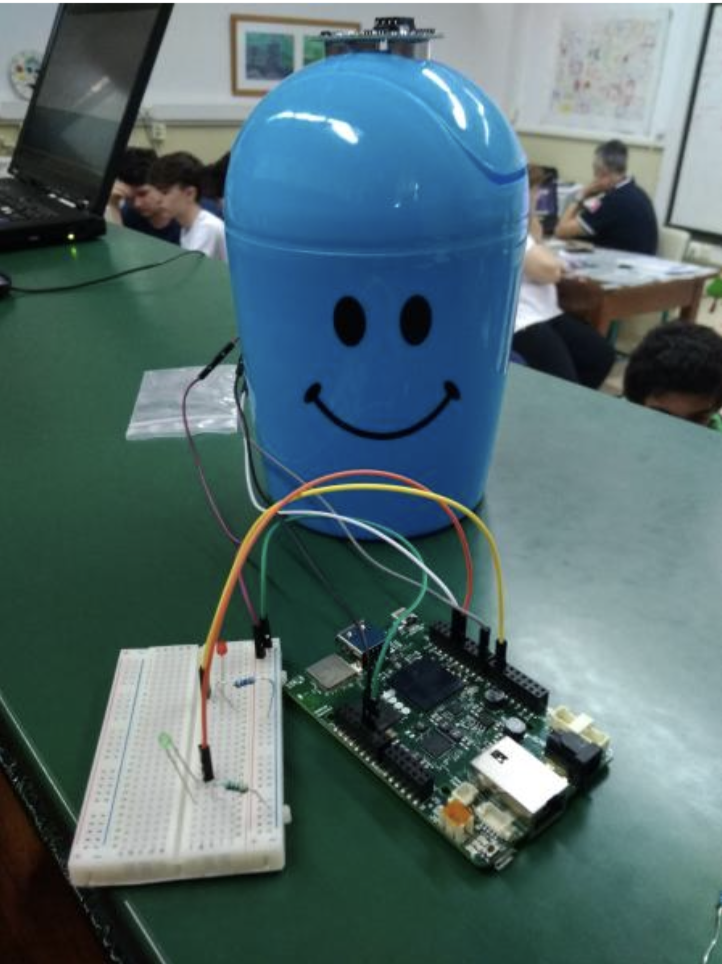
Figure 5: The complete project
Step 4: Reflection
- Debate “IoT and privacy”
- STEM careers
- Discussion and questionnaires’ completion



